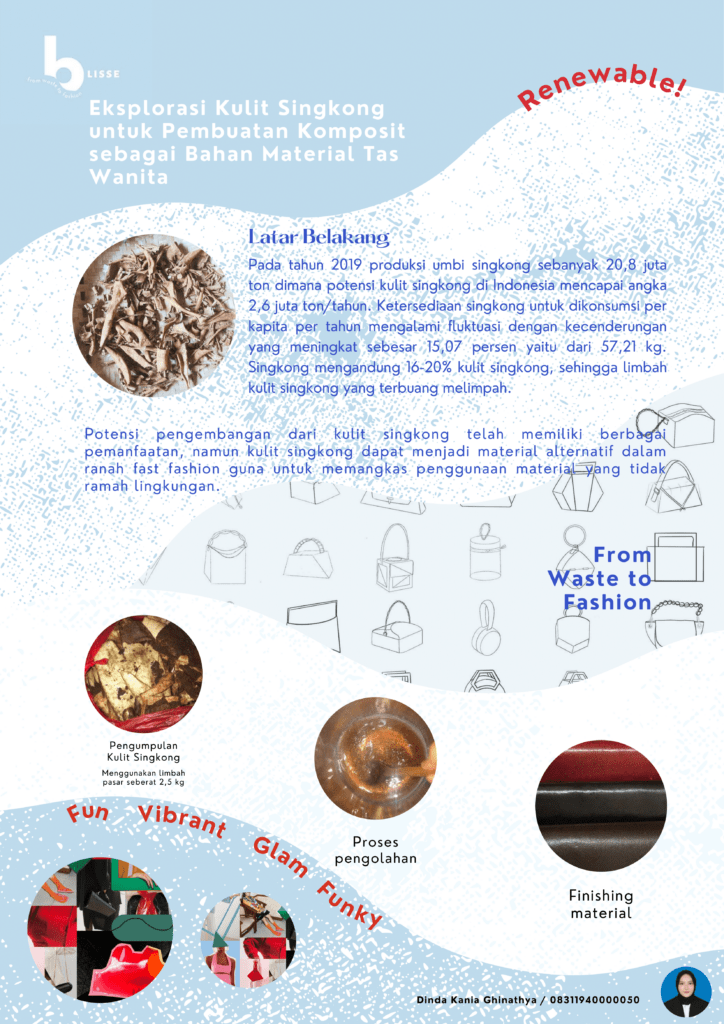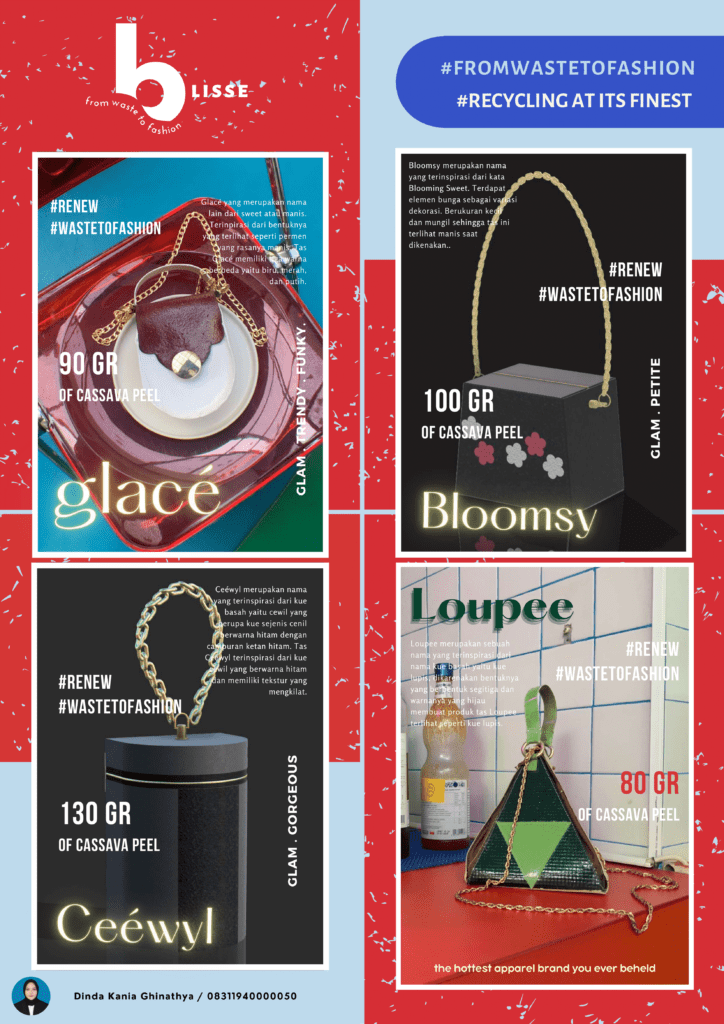

Indonesia is one of the countries with the largest level of cassava production in Indonesia with fourth place which produces 19-20 million tons of cassava. In 2019, data from the Directorate General of Food Crops recorded, the cassava planting area was 620.50 ha which produced 16.35 million tons of cassava. Cassava waste in the form of cassava peels is very abundant and is of little interest to the public for processing, although there are already several processed cassava peels on the market such as cassava skin chips, cassava peels as animal feed, cassava peels as bio-ethanol, etc. However, from another point of view, cassava peel is included in market waste which is not further processed and becomes waste that disturbs air pollution around the market. So that further processing is needed which is more effective to reduce the pollution. An organic material innovation that utilizes cassava peels as one of the main ingredients in the manufacture of organic materials because there is starch that can be used in the manufacture of biopolymers. This cassava peel material has characteristics such as synthetic leather which is commonly used in fast fashion products and the manufacture of this biomaterial has a zero waste concept where there is no waste from the production period to the completion of production. So that it can be used as an alternative biodegradable material that is more environmentally friendly in order to overcome the fast fashion phenomenon. Biodegradable materials in Indonesia have developed more than ten years ago, but research on these materials is still very rare. Seeing the market opportunity for women’s bag products, Cassava peel leather can be used as an alternative as leather or fabric material which can be processed into a craft. Judging from its sturdy characteristics and smooth surface, this material can be applied into a bag product that resembles leather. Therefore it is necessary to develop a design that makes the value of this biomaterial product more useful and of high value. To support this research, the authors made material observations of experts on the production process with the aim of knowing the type of material treatment so that they can create high-value women’s bag designs with good quality.
